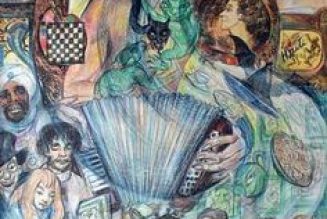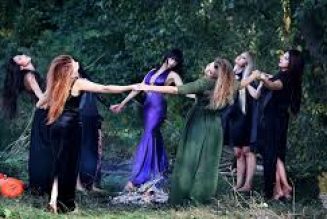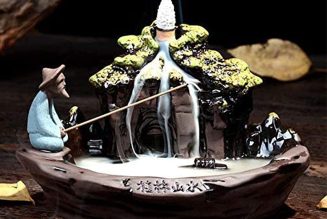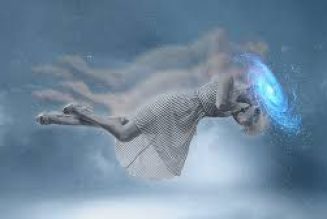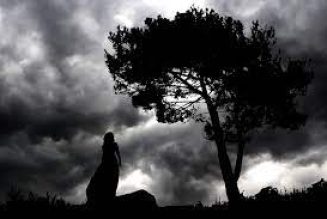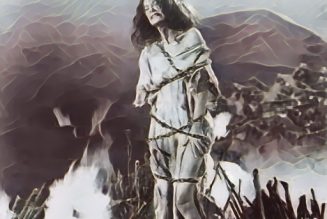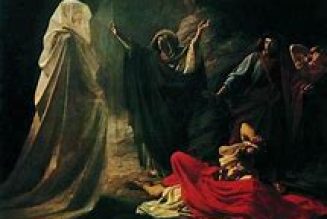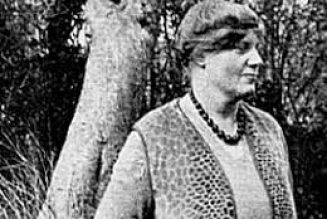Chelmsford witches Four major witch trails in the 16th–17th centuries that resulted in numerous convictions and executions.
The first trial occurred in the summer of 1566, under the rule of Queen Elizabeth, whose Parliament had passed the second of England’s three witchcraft acts in 1563.
The Act of 1563 tightened penalties for witchcraft, making it a felony to invoke evil spirits for any purpose, regardless of whether or not harm resulted. It provided for mandatory jail sentences but did not provide for the death penalty unless a human being died because of maleficia.
Thus, the 1566 Chelmsford trials became the first significant witch trials to be tested under the new law.
The outcome of the trials took on further weight because of the prestigious judge and prosecutors: John Southcote, a justice of the Queen’s Bench; Rev.
Thomas Cole, a rector of a church near Chelmsford; Sir John Fortescue, who later became chancellor of the Exchequer; and, most notably, Sir Gilbert Gerard, attorney general.
The records of the trials were written up and distributed in pamphlets, which became popular reading.
Three women were charged with witchcraft: Elizabeth Francis, Agnes Waterhouse and Agnes’ daughter, Joan Waterhouse.
All lived in the little village of Hatfield Peverell.
Their only connection was a white-spotted cat named Sathan, which was alleged to be a familiar that talked.
The most damning testimony in the two-day affair was given by a malicious 12-year-old girl. Francis and Agnes Waterhouse “confessed” to their charges, while Joan Waterhouse threw herself on the mercy of the court.
Francis was the first to be tried, on July 26.
The wife of Christopher Francis, she was charged with bewitching the baby of William Auger, which “became decrepit.”
She confessed to that crime and also to some doings far racier and more nefarious, including illicit sex, murder
and abortion.
Francis said she had been taught the art of witchcraft at age 12 by her grandmother, Mother Eve, who counseled her to renounce God and give her blood to the Devil. Mother Eve delivered the Devil to Francis in the likeness of a white-spotted cat, which was to be named Sathan, fed bread and milk and kept in a basket.
According to the trial records, this Elizabeth desired first of the said Cat (calling it Sathan) that she might be rich and to have goods, and he promised her that she should—asking her what she would have, and she said sheep (for this Cat spake to her as she confessed in a strange hollow voice, but as such she understood by use) and this Cat forthwith brought sheep into her pasture to the number of eighteen, black and white, which continued with her for a time, but in the end did all wear away she knew not how.
Item, when she had gotten these sheep, she desired to have one Andrew Byles to her husband, which was a man of some wealth, and the Cat did promise her that she should, but that she must first consent that this Andrew should abuse her, and she so did.
And after when this Andrew had thus abused her he would not marry her, wherefore she willed Sathan to waste his goods, which he forthwith did, and yet not being content with this, she willed him to touch his body which he forthwith did whereof he died. Item, that every time he did anything for her, she said that he required a drop of blood, which she gave him by pricking herself, sometime in one place and then in another, and where she pricked herself there remained a red spot which was still to be seen.
Item, when this Andrew was dead, she doubting [believing] herself with child, willed Sathan to destroy it, and he bade her take a certain herb and drink it, which she did, and destroyed the child forthwith. Item, when she desired another husband he promised her another, naming this Francis whom she now hath, but said he is not so rich as the other, willing her to consent unto that Francis in fornication which she did, and thereof conceived a daughter that was born within a quarter of a year after they were married.
After they were married they lived not so quietly as she desired, being storred (as she said) to much unquietness and moved to swearing and cursing, wherefore she willed Sathan her Cat to kill the child, being about the age of half a year old, and he did so, and when she yet found not the quietness that she desired, she willed it to lay a lameness in the leg of this Francis her husband, and it did in this manner.
It came in a morning to this Francis’ shoe, lying in it like a toad, and when he perceived it putting on his shoe, and had touched it with his foot, he being suddenly amazed asked of her what it was, and she bad him kill it and he was forthwith taken with a lameness whereof he cannot be healed.
After Elizabeth Francis had kept Sathan for 15 or 16 years, she grew tired of him.
One day, she encountered Agnes Waterhouse en route to the oven and asked Waterhouse for a cake, in exchange for which she would give her “A thing that she should be the better for so long as
she lived.” Waterhouse agreed and gave her a cake.
Francis then delivered Sathan to her and taught Waterhouse what she had been taught by Mother Eve, including feeding the cat her blood, bread and milk.
The records do not indicate whether or not testimony was given by William Auger, father of the bewitched child, nor do they explain why the confessions to murder did not lead to a death sentence.
Francis was found guilty of bewitching the child and was sentenced to a year in prison.
The following day, July 27, Agnes Waterhouse, a 63- year-old widow, went on trial on the charge that she had bewitched one William Fynee, who deteriorated and died in November 1565.
Agnes confessed to her guilt and acknowledged that she had also willed her cat to destroy her neighbors’ cattle and geese.
When she fell out with the widow Gooday, Agnes drowned the woman’s cow.
She also caused another neighbor to lose her curds when the woman denied Agnes’ request for butter.
At Agnes’ command, Sathan caused another neighbor man to die.
After all these acts of maleficia, Agnes said she rewarded Sathan, whom she kept at home as a toad.
She denied that she gave the cat her blood, but court officials examined her and found numerous telltale spots on her face and nose (see witch’s mark).
Agnes testified that she dispatched her daughter, Joan, to the home of Agnes Brown, a 12-year-old girl, to ask for bread and cheese.
The girl refused the request.
Angry, Joan went home and, in the words of her mother.
remembered that her mother was wont to go up and down in her house and to call Sathan Sathan she said she would prove the like,
then she went up and down the house and called Sathan and then there came a black dog to her and asked her what she would have,
then she said she was afraid and said,
I would have thee to make one Agnes Brown afraid, and then he asked her what she would give him and she said she would give him a red cock,
he said he would have none of that, and she asked him what he would have then,
he said he would have her body and soul
Agnes Brown was called to the stand.
The girl testified that on the day in question, she was churning butter at home when she saw a thing like a black dog with a face like an ape, a short tail, a chain and a silver whistle about his neck, and a pair of horns on his head.
The dog carried the key to the milk-house door in his mouth.
She asked the creature what he wanted, and he answered, “Butter,” but she said no.
The dog then took the key and opened the milk-house door and laid the key on a new cheese.
After a while, he came out and told the girl he had made flap butter for her, and left.
Brown told her aunt, who immediately sent for a priest.
The priest advised Brown to pray and call on the name of Jesus.
The next day, the dog reappeared carrying the milkhouse key. Brown said, “In the name of Jesus what hast thou there?”
The dog replied that she spoke “evil words” in using the name of Jesus, and left.
In subsequent visits, the dog came bearing a bean pod in its mouth and then a piece of bread.
Each time, Agnes said, “In the name of Jesus what hast thou there?” and the dog spoke of “evil words” and left.
Finally, the dog showed up with a knife in its mouth and asked Agnes if she were not dead.
Agnes replied she was not and thanked God.
Then, she testified, . . . he said if I would not die that he would thrust his knife to my heart but he would make me to die,
then I said in the name of Jesus lay down thy knife,
he said he would not depart from his sweet dame’s knife as yet,
then I asked of him who was his dame,
then he nodded and wagged his head to your house Mother Waterhouse . . .
The court asked Agnes Waterhouse to produce the dog and offered to let her go if she could, but the old woman claimed to have no more power over the animal.
Joan Waterhouse, 18, was tried on the charge of bewitching Brown, who claimed to become “decrepit” in her right leg and arm on July 21.
Joan was found not guilty, but her mother was sentenced to die by hanging.
Agnes was executed on July 29.
Just before she went to the gallows, she made a final confession:
This confession was that she had been a witch and used such execrable sorcery the space of fifteen years, and had done many abominable deeds,
the which of these deeds she repented earnestly and unfeignedly, and desired almighty God’s forgiveness in that she had abused his most holy name by her devilish practises, and trusted to be saved by his most unspeakable mercy.
Waterhouse confessed she had sent Sathan one last time to destroy a neighbor and his goods,
a tailor by the name of Wardol, but the cat returned saying Wardol’s faith was so great he could not be harmed.
She also admitted that she always prayed in Latin, not in English, which seemed to upset the townspeople more than her alleged
witchcraft crimes, for it was considered “God’s word” that prayers could be said in “the English and mother tongue that they best understand.” Waterhouse replied that Sathan would not allow her to pray in English.
While Joan remained free of trouble after the trial, Elizabeth Francis encountered more difficulty with the law.
She was later indicted for bewitching a woman, who fell ill for 10 days.
Francis pleaded innocent but was found guilty and sentenced to another year in jail plus four confinements to the public pillory.
The second and third mass trials at Chelmsford. In 1579 four women were charged with bewitchment; one case involved another evil black dog.
One woman was a repeat offender: Elizabeth Francis, who was charged with causing the slow death of one Alice Poole in 1578. Francis pleaded innocent, but this time the court was out of patience.
She was hanged.
Ellen Smith was charged with bewitching a four-yearold child, who cried out, “Away with the witch!” as she died.
The child’s mother then saw a large black dog go out the door of her house.
Smith, whose mother had been hanged as a witch, threw herself on the mercy of the court and was hanged.
A third accused witch, Alice Nokes, was also hanged, but the fourth, Margery Stanton, accused of bewitching a gelding and a cow to death, was released because of the weakness of the case against her.
Ten years later, in 1589, nine women and one man were brought up on charges of bewitchment.
The bulk of the evidence against them came from children, and once again, testimony as to the existence of familiars was accepted by the court.
Trial records indicate the fate of only seven of the 10:
four were hanged for bewitching others to death, and three were found not guilty on charges of bewitching persons and property.
Matthew Hopkins comes to Chelmsford.
The fourth major trial took place in 1645, at the instigation of England’s most notorious witch finder, Matthew Hopkins.
Hopkins made a substantial living traveling about the countryside whipping up anti-witch hysteria.
He promised to find witches, bring them to trial and get them convicted—the last was most important, for his fees were based on numbers of persons convicted.
His methods relied heavily upon establishing the existence of familiars and finding witch’s marks, and he relied as well on torture, such as walking and sleep deprivation, to extract confessions.
It is not known exactly how many people were charged by Hopkins at Chelmsford, but the jail calendar and pamphlets published after the trials listed 38 men and
women, of whom Hopkins claimed 29 were condemned.
Most were hanged; several died in jail.
Hopkins amassed evidence against them from 92 persons.
Much of the testimony was coaxed from witnesses with plenty of suggestions added by Hopkins.
For example, a child who spoke of nightmares and being bitten in bed was not bitten by fleas, which were in the bed, but by a witch’s familiar, Hopkins suggested.
Once the possibility of a familiar was established, Hopkins ordered a search of the suspect’s premises and body. Any animal, from a toad to a rat to a cat, was immediately declared the said familiar, while any unusual marks upon the suspect’s body added further proof.
For example, Hopkins succeeded in getting one Margaret Landish to admit that, while lying ill, “something” had come to her and “sucked her on her privy parts and much pained and tormented her.”
Landish was encouraged to speculate who sent this imp, and she pointed the finger at Susan Cock, another defendant.
The familiars soon multiplied to include a rat, mice, kittens, toads, cats, rabbits, dogs and frogs, which were alleged to have tormented many and killed children and adults.
Margaret Moone admitted to harboring an army of 12 imps, which she dispatched to destroy bread in a bakery and to upset brewing.
When her landlord evicted her in favor of a man who would pay a higher rent, Moone said she got her revenge by sending a plague of lice to the landlord’s household.
Anne Cate signed a confession admitting to sending her four mice familiars to bite the knees of a man who then died.
Hopkins went into great detail regarding the descriptions and activities of these malevolent imps, perhaps because he once claimed to have been frightened by a familiar, which he described as “a black thing, proportioned like a cat oneley it was thrice as big.”
It stared at him and then ran away, followed by a greyhound.
Of the 38 known accused in the Chelmsford trials, 17 were hanged; six were declared guilty but reprieved; four died in prison; and two were acquitted.
The fate of the remainder is not certain.
